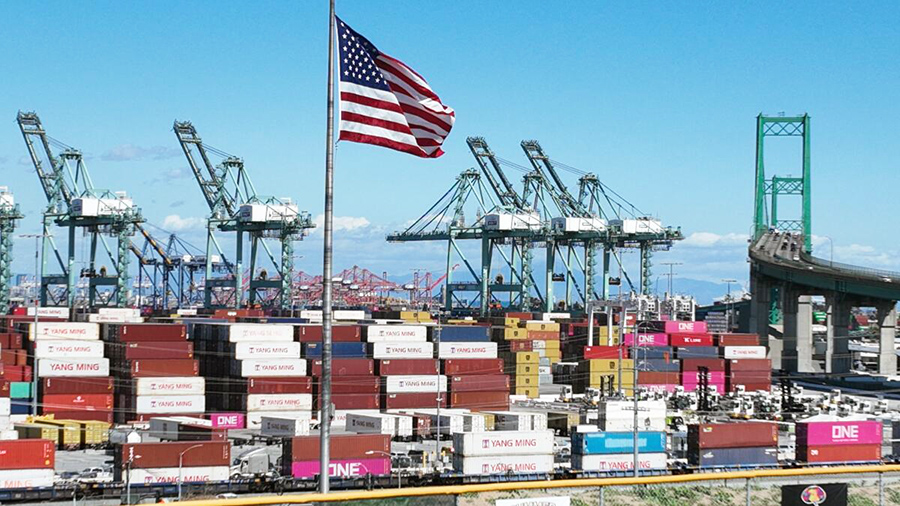The SFIA 2025 State of the Industry Report found that despite slower growth, a wider majority of industry executives reported company profitability improved in 2024 and are more optimistic about the state of the industry than in prior years. Tariffs, however, loomed at the top of the list of concerns.
The SFIA collected the responses from the executives who participated in the report in December and January. At that time, President Trump, before beginning his new term in office on January 20, had threatened across-the-board tariffs of 10 percent to 20 percent on all import goods into the U.S. to support U.S. business interests and, specifically, imposing a 25 percent tariff on imports into the U.S. from Canada and Mexico and 10 percent on China to reduce the flow of illegal migrants and fentanyl.
President Trump did not reveal the full extent of his tariff plan until April 2 as part of his “Liberation Day“ announcement.
The SFIA executive survey found that many companies are hesitant to change supply chains until there is clarity from the President on the tariff rates. Some 68.4 percent of respondents have no plans to shift manufacturing networks in the months ahead, up from 63.6 percent in the year-ago SFIA survey. Of the respondents, 18.9 percent said they intended to manufacture more products in the U.S., down from 23.9 percent in the association’s 2024 survey.
The association noted that many of the surveyed respondents had stepped up efforts to diversify company supply chains during the President’s first administration when he imposed tariffs on many goods imported into the U.S. from China.
Overall, seven of the top eight concerns cited by industry executives were with the U.S. economy. After tariffs, the remaining Top 10 concerns were increasing market share, slower consumer spending, inflation, transportation/logistics, potential economic recession, material cost/availability, labor cost/availability, liquidity/cash flow and management, and upgrading digital capabilities.
Declining sports participation ranked as the 15th biggest concern for industry executives after being weighed as the fourth top concern in 2024 and the top concern in 2021 following the 2020 pandemic.
Besides tariffs and economic concerns, the SFIA State of the Industry Report outlines that industry executives are pleased with recent performance results and are upbeat about prospects.
Of the respondents, 65 percent reported increased profitability in 2024, up 690 basis points from 2023 and the highest percentage recorded in the past decade. Only 21.4 percent of executives indicated that they saw lower profits, up from 18.2 percent in 2023.
According to the SFIA report, the sporting goods industry’s revenue growth rate was 2.9 percent in 2024, the slowest since the first year of pandemic; however, the industry’s growth rate exceeded the U.S.’s GDP expansion of 2.8 percent.
The SFIA noted that the industry’s annual increase would have also been higher had fitness (exercise equipment) data been figured into the rate as it was in prior years. The association excluded the fitness category for insufficient statistically significant data.
Just 4.1 percent of respondents described the state of the sporting goods industry as “weak,“ the study’s lowest response rate in six years. Conversely, 52.1 percent rated the current state of the sporting goods industry as “strong,“ up from 50.1 percent the prior year. When looking ahead, only 1.0 percent of industry executives described the future state of the business as “weak,“ improving from 3.1 percent in 2023. Those seeing the industry’s future as “strong“ were 75.2 percent against 78.1 percent last year, while respondents rated the industry’s future as “average“ at 23.7 percent versus 18.8 percent.
Other findings in the SFIA 2025 State of the Industry Report
- Some 85.1 percent (86.5 percent in 2023) of respondents expect to grow company domestic sales in 2025, while 8 percent (65.4 percent in 2023) expect international growth.
- Industry inventory levels declined for a second consecutive year after the peak year in 2022. Nearly 47 percent of respondents were “very comfortable“ or “somewhat comfortable“ with company inventory levels versus the 18.4 percent who were “very uncomfortable“ or “somewhat uncomfortable.”
- Only 4.2 percent of respondents intend to reduce manufacturing capacity in 2025 versus 45.3 percent who want to add volume in the months ahead.
- Nearly 94 percent of sporting goods companies intend to increase (7 percent) or maintain (37.1 percent) R&D budgets in 2025.
Image courtesy Port of Los Angeles
















